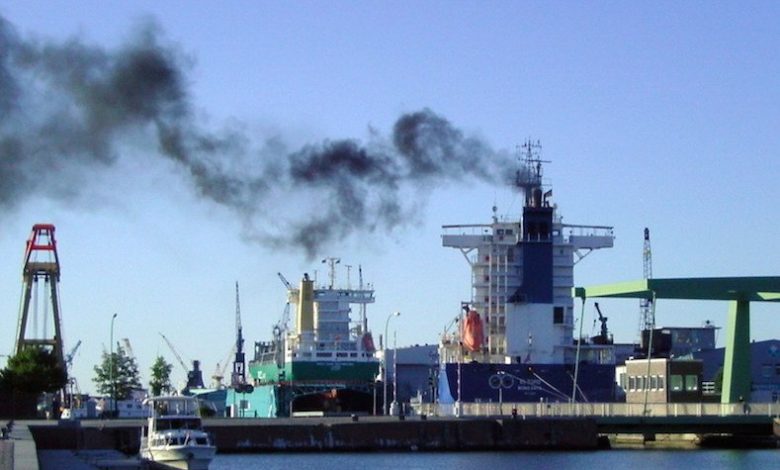COP21: maritime deja vu

Thomas Timlen highlights the similarities in the wordings of maritime-related texts in Paris to COP15 in Copenhagen six years ago.
The COP21 fun is underway in Paris, and some wonder where will it end for the maritime sector.
Let’s look at the draft agreement for clues.
The oft-revised negotiating draft text of over 50 pages now has references to the maritime industry reinserted after the two COP21 co-chairs had previously removed the references. Reinsertion took place at a preparatory conference in Bonn held in October.
Before considering the impact of these out and in again references, who exactly are the COP21 co-chairs that removed them?
They are two guys.
One of the co-chairs is Daniel Reifsnyder, a deputy assistant secretary for environment at the US Department of State.
The other is Algerian ambassador Ahmed Djoghlaf.
OK, they wanted the maritime sector and other issues out of the agreement. The United States and Algeria. They were overruled.
Be that as it may, one could conclude that addressing the maritime sector during COP21, or allocating extensive time to discuss it, is not a high priority of the co-chairs.
And these two guys will steer the discussions in Paris.
They will be working from a draft agreement with many provisions in square brackets, meaning that they remain to be agreed, which is perhaps redundant as the agreement in its entirety must be agreed by no less than 196 negotiating parties (that’s UN-speak for ‘United Nations Member States’)
No wonder Mr Reifsnyder was quoted saying: “It’s kind of like taking 196 cats and trying to get them all to move in the same direction.” Good luck, sir!
So are market-based mechanisms or bunker taxes found in the draft agreement text? What exactly does it say regarding the maritime sector?
Page 12 (of 51) is the only place where you will find the word ‘maritime’:
ADP 2-11 – Draft agreement and draft decision on workstreams 1 and 2:
Parties [shall][should][other] pursue limitation or reduction of greenhouse gas emissions from aviation and marine bunker fuels, working through the International Civil Aviation Organization and the International Maritime Organization, respectively, with a view to agreeing concrete measures addressing these emissions, including developing procedures for incorporating emissions from international and marine bunker fuels into low-emission development strategies.
Note the soft language, no demand for a bunker tax or market based measure, simply the instruction for the IMO to pursue concrete measures to reduce GHG emissions.
Unless…
In UN-speak, what exactly does “developing procedures for incorporating emissions from… marine bunker fuels into low-emission development strategies” mean? That in itself would seem to leave plenty of room for debate.
Frankly COP21, if it manages to find time to debate and reach consensus on this paragraph, intends (again) to toss the ball over to the IMO to decide the best way to achieve sustainable emissions reductions, just like it did at COP15 in Copenhagen in 2009.
Since then, the predominant IMO focus has been on technical solutions.
Back in Paris, the IMO and its industry supporters will surely point to progress with the Energy Efficiency Design Index (EEDI) and the Ship Energy Efficiency Management Plan (SEEMP) amongst other initiatives as existing examples of concrete measures aimed at reducing ships’ carbon footprints.
For its part the IMO has already made its COP21 wish-list public, which states:
IMO’s main objectives for the Paris Conference (COP 21/CMP 11) are:
- In all communications seek to make clear that, as its track record to date so clearly demonstrates, IMO is the appropriate international body to continue work to address greenhouse gas emissions from ships engaged in international trade;
- in all communications seek to make clear that international shipping regulations are currently applied to all ships according to the non-discriminatory principle on which the IMO regulatory framework is based; and
- the interests of developing countries are fully taken into account, through IMO’s Technical Cooperation Programme and the implementation of resolution MEPC.229(65) on Promotion of Technical Co-operation and Transfer of Technology relating to the Improvement of Energy Efficiency of Ships.
If that looks familiar, it would be because it reads exactly the same as the IMO wish list for COP15 in 2009, except for the reference to Paris of course.
So in Paris the IMO seeks to make a few things clear and remind participants that it is a good friend of developing nations.
If experience is any guide, UNFCCC will not enforce the OECD’s proposed tax on bunker fuels, but rather implore the IMO to continue its efforts to adopt technical improvements aimed at reducing ship emissions, with a degree of expediency.
If more than that happens in Paris regarding the maritime sector, I’d be surprised.
Particularly considering that Mr Reifsnyder and Mr Djoghlaf would rather leave shipping out of the agreement altogether.
And they are, after all, the co-chairmen.
